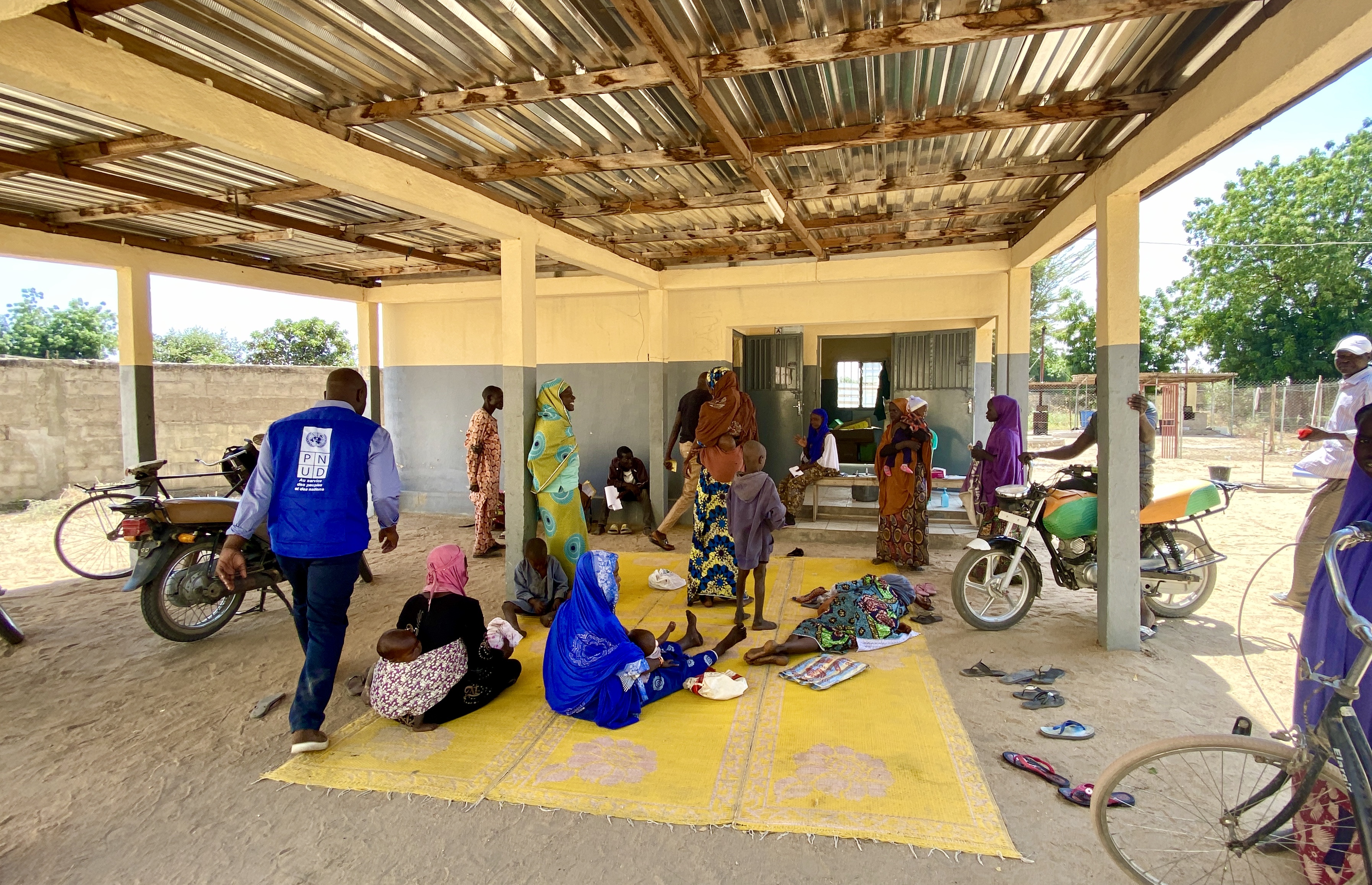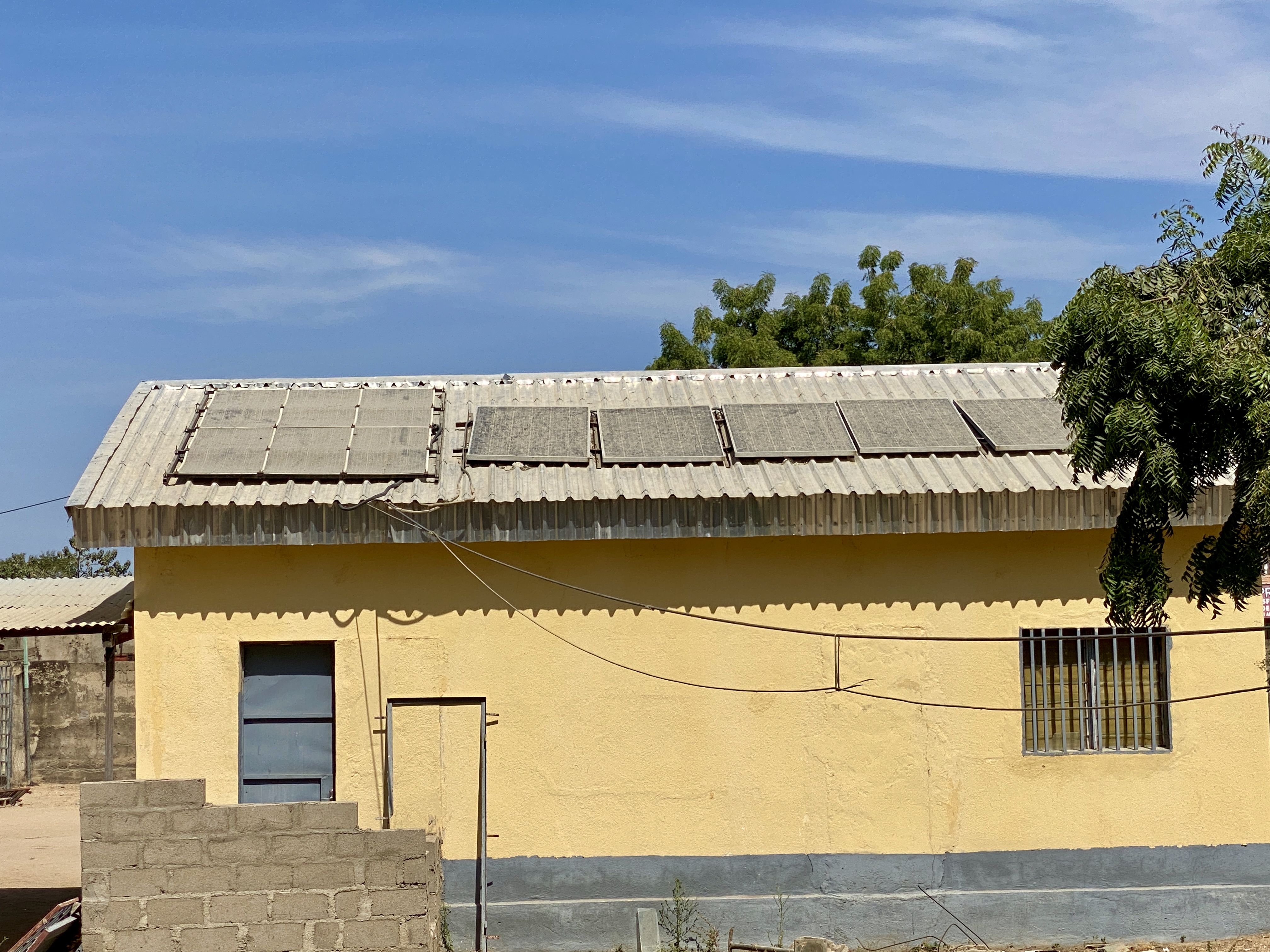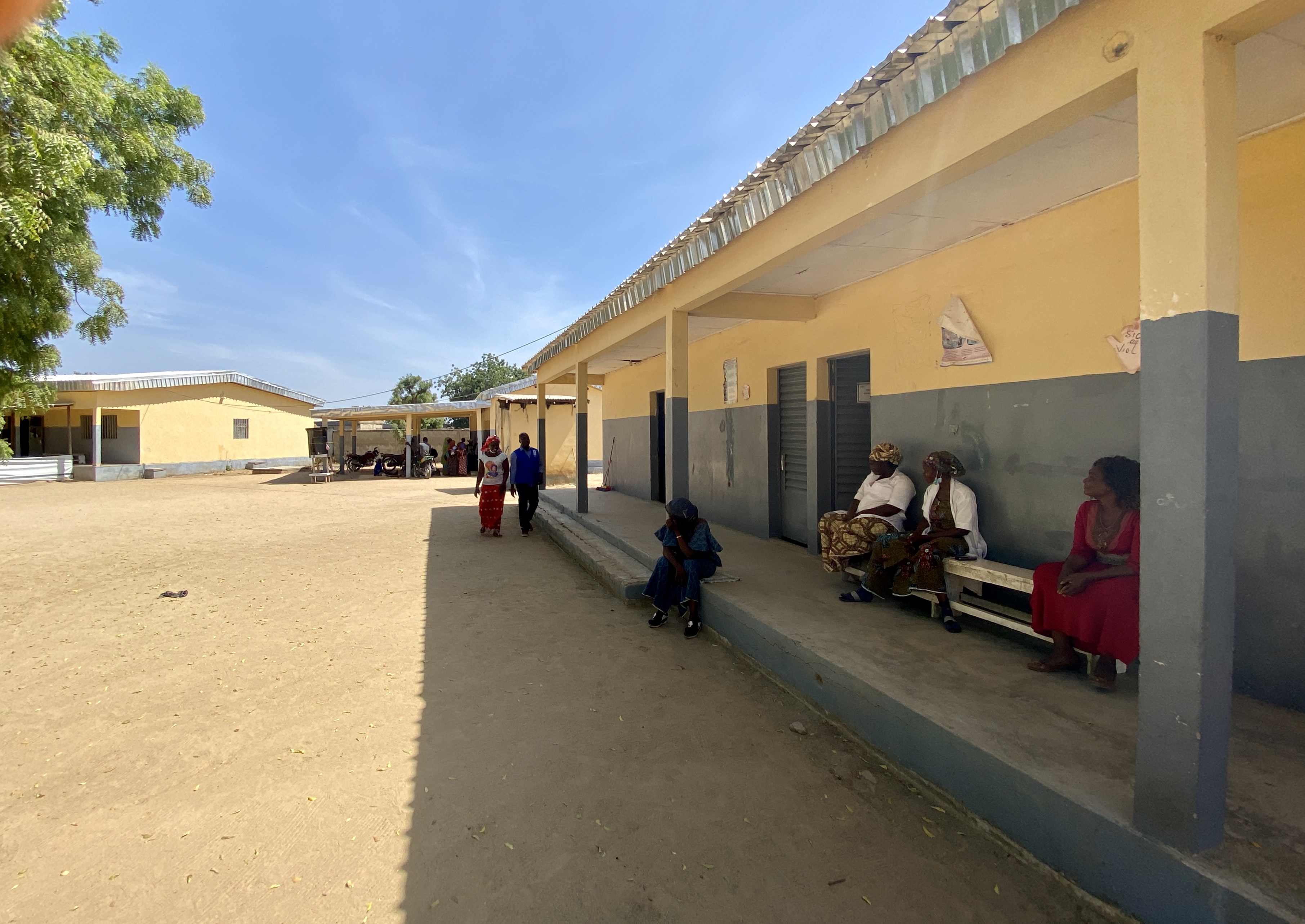The Regional Stabilization Facility has installed a solar power plant in the Amchidé Health Centre, to facilitate the centre's service to over thirteen communities in the Far-North region of Cameroon.
Solar Power Restores Life in the Amchidé Health Centre
February 1, 2023
"After the hospital was destroyed, it became impossible to carry out medical examinations due to the lack of electricity needed to operate the laboratory. This hampered the hospital significantly; patients were forced to travel 26 kilometers to the Mora Hospital for examinations," explains Dr. Diga Mahamat, chief of the Amchidé Health Centre.

A cross-section of patients in the consultation block of the health center, thanks to UNDP and Japan’s contribution
During the outbreak of violence in the Lake Chad Basin in 2014, Amchidé, a community in Cameroon's Far-North region that shares a border with Borno State, Nigeria, was among the most affected communities, with children and women being the most afflicted. Many people were killed or injured, and infrastructure was severely damaged. The Amchidé Health Center, a healthcare hub in the area that serves over thirteen neighbouring villages, was one of the infrastructures that were destroyed by the crisis. "The health centre stopped functioning. The village was almost deserted until around 2017 when people began to return." Lawan Maina, the traditional leader of Amchidé narrates.
To address the violence in the Lake Chad Basin, UNDP established a Regional Stabilization Facility that serves four countries, including Cameroon. Since 2021, the Cameroon Facility has been working in partnership with the government and donors, including Japan, to help communities rebuild their lives. With funding from the People’s Republic of Japan, the project installed a solar power plant in the Amchidé Health Centre and put in place a local committee to manage it. "The solar power plant installed in the health centre is of great quality and has more than enough capacity to power the health centre and its equipment." Christophe Charbon, Head of RSF Cameroon explains.

A cross-section of the solar power recharge and transformation system
The plant has made a significant contribution to restoring the hospital's efficiency, including the conservation of vaccines in favorable conditions, unlike before when the vaccines got bad due to poor preservation; "it has enabled us to provide quality care both during the day and at night, with our laboratory running smoothly and our freezer perfectly keeping vaccines fresh." Dr. Diga Mahamat explains with an air of satisfaction. "It was risky for our people to travel long distances to receive medical care. Today, we no longer travel miles for medical check-ups or treatment." Lawan Maina adds, with an expression of satisfaction.
The installation of the solar energy plant has not only restored the productivity of the health centre but has also contributed to tripling its patient attendance. "Before the project came to our rescue with the solar power plant, we used to receive an average of one hundred patients, including two childbirths a week; today, with the availability of constant electricity from the plant, we now receive over three hundred patients and thirteen births a week." Dr. Diga explains further.
Although UNDP, Japan, and other partners and actors have significantly supported community amenities in the region, including the health centre, there are still gaps to be filled to optimize the region's stabilization. "While appreciating the support from UNDP, Japan, and other organizations, permit me to highlight the increasing needs of the hospital. We need beds and other materials, especially for the laboratory, to meet up with the increasing patient density," Dr. Diga Mahamat, Chief of the Health Center, implores.
In addition to supporting the hospital, the Japan funding is permitting the UNDP RSF Cameroon window to implement several activities aimed at providing security and essential infrastructure and basic services in target communities, and providing livelihood infrastructure, including a centre for the promotion of women, a livestock and fisheries office, a cattle loading dock, and a borehole with a solar-immersed pump.
"With the funds from Japan and other donors, we are progressively #BuildingBackBetter in 21 localities in the region and continuing to work with our partners and affected communities to identify and respond to pertinent needs, starting with the most critical," confirms Christophe Charbon.

A cross-section of solar panels installed on the roof of the solar power server room

A cross-section of solar panels installed on the roof of the solar power server room

 Locations
Locations



